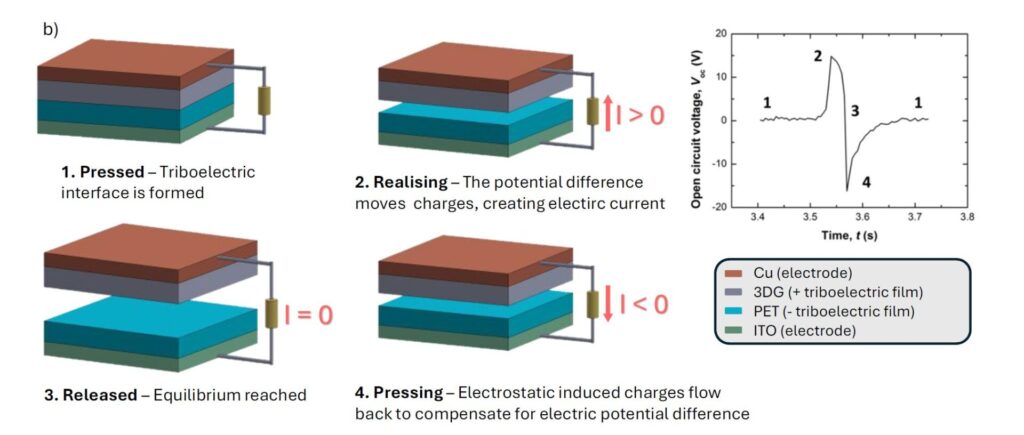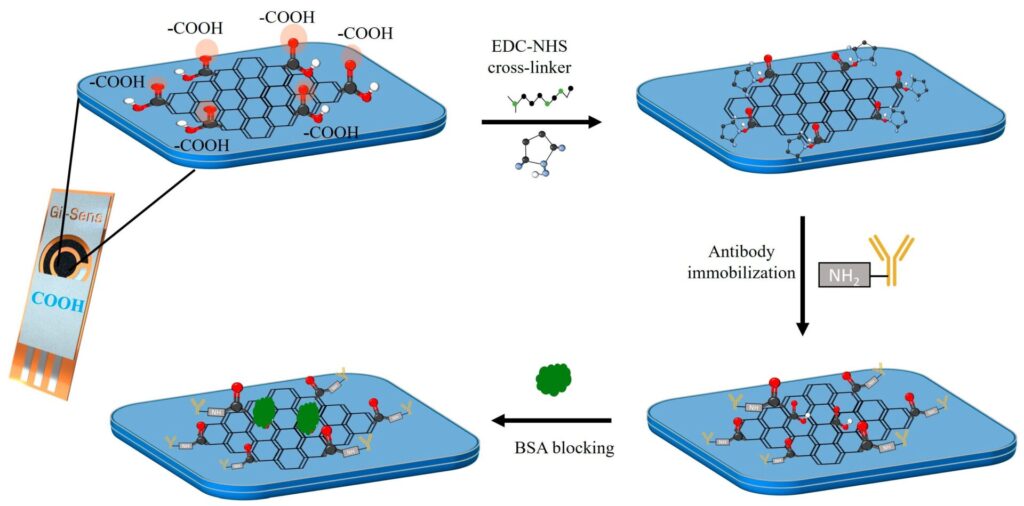
Sustainable Occupancy Sensing Platform via Triboelectric and Piezoresistive Pressure Sensors
Highlights
- TENG powered by Gii added potential for energy harvesting from footsteps (around 60 μW per footstep). This opens the potential for a sustainable, low-maintenance management system.
- Both mats exhibit mechanical robustness throughout the fatigue tests, with values recorded remaining within ±2 % of initial values to the end.
Abstract
Real-time occupancy data enable smart-building systems to optimise HVAC and lighting, yet most floor-sensor solutions require external power or sacrifice detection accuracy.
Combining piezoresistive and triboelectric approaches offers a route toward low-maintenance, energy-aware sensing. Therefore two floor-mat systems were developed: an 8 × 8 (64-pixel) Velostat piezoresistive matrix as a benchmark and a 4 × 4 (16-pixel) triboelectric nanogenerator (TENG) matrix that detects footsteps while harvesting their energy.
Both mats interface with an Arduino-based board, Bluetooth link, and custom Python dashboard for real-time monitoring, sampling at 25.6 ms (Velostat) and 20 ms (TENG).
Under realistic use, the Velostat mat achieved 96% entry/exit accuracy, whereas the TENG reached 85% and produced ∼60 μW per footstep.
Although a fully integrated energy-harvesting module is not yet implemented, the modular hardware-software design supports future additions—such as temperature and humidity sensors—and lays the groundwork for scalable, sustainable smart-building management; ongoing work will optimise the harvesting stage and extend the approach to broader environmental-monitoring applications.
Introduction
Modern smart buildings rely on real-time occupancy information to optimise environmental control systems and improve energy efficiency. Knowing when and where people are present enables data-driven management of lighting, HVAC, and other services, reducing waste and enhancing comfort [1]. Occupancy detection and analysis of occupants’ behavioural patterns have been reported to reduce drastically the energy usage, with studies presenting decreases of up to 40% and 55%, when lighting management determining the timing of automatically switching off the lights after the occupied space is vacated [2] and ventilation control systems using environmental parameters based on the sensing by proxy methodology [3], respectively, were utilised.
Pressure-sensitive mats embedded in floors are a well-established solution for presence detection in smart environments [11]. These mats register the downward force exerted by occupants’ feet or bodies,
providing a direct indication of human presence. In contrast to cameras or PIR motion sensors, floor pressure mats do not require line-of-sight and can detect stationary occupants (e.g. someone sitting
or standing still), not just movement. Various transduction mechanisms have been employed in such mats, including resistive pressure sensors, capacitive touch sensors, piezoelectric films, and triboelectric generators [12]. Regardless of the mechanism, the principle remains the same: a person’s weight on the mat produces an electrical signal that signifies occupancy.
Ruiz-García et al., “Sustainable Occupancy Sensing Platform via Triboelectric and Piezoresistive Pressure Sensors,” in IEEE Sensors Letters, doi: 10.1109/LSENS.2025.3589020. keywords: {Triboelectricity;Sensors;Piezoresistance;Electrodes;Real-time systems;Immune system;Temperature sensors;Privacy;Pressure sensors;Monitoring;triboelectric effect;piezoresistive effect;graphene;pressure sensor;IoT},


